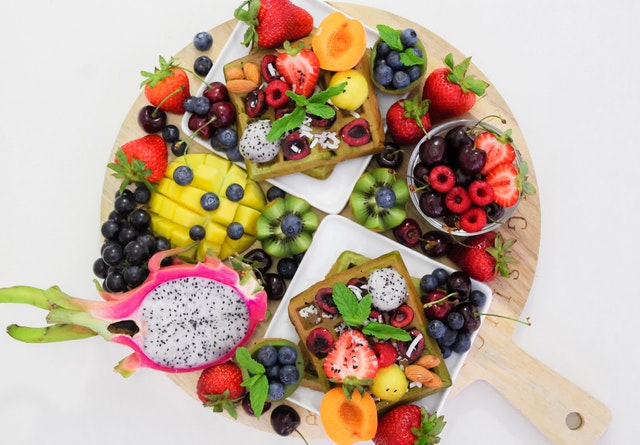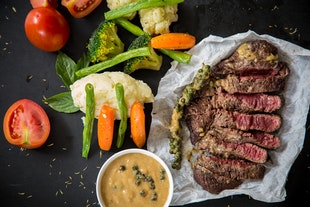Nutritious Home Cooking
If you’re the kind of person who regularly indulges in a restaurant-cooked meal or takeaway dinner, we bet the past few months haven’t exactly been smooth sailing in the cooking department. Not being able to go out to dine at our favorite restaurants, and having a smaller selection of takeaway options has led to plenty of boring, unhealthy, and just plain underwhelming meals.
In this blog, we’ll give you a rundown of the essential food groups you’ll need for a nutritious home cooking. We’ll also lay out those that you should only use in moderation, as well as how to distinguish fresh, ready-to-eat ingredients from old or expired ones. Finally, we’ve provided some links to quick, healthy, and beginner-friendly recipes for you to attempt yourself – feel free to tag us online when you do! #HomeCookCareerline
1. ESSENTIAL INGREDIENTS
Wholegrains and Seeds
Unprocessed wholegrain and seeds are high in fiber and B vitamins. While lots of us eat plenty of carbohydrates, particularly white breads and pastas, these are often highly processed and contain large amounts of sugar. If processed carbohydrates are a dietary staple for you, try substituting them with wholegrain bread, brown rice, couscous, and bulgur.
Fruits and Vegetables
The Australian Government recommends that every adult eats 2 servings of fruit and 5 servings of vegetables every day – but plenty of us are falling short of that number.
Fruits and vegetables are high in fiber, which is essential for maintaining gut health. They are also a great source of folate, vitamin C, and many more vitamins and minerals that are necessary to maintain healthy bodies. Eat your fruit raw and unprocessed for maximum nutritional benefit, and avoid cans of fruit with sugary syrup! It’s also recommended by dietitians to “eat the rainbow” – that is, include fruits and vegetables of different colors in your diet. Each color of fruit and vegetable has different nutritional benefits, so get creative and see what delicious, colorful culinary delights you can create!

Protein
Whether you’re a meat eater, vegetarian, or vegan, protein should be a core component of your diet. Proteins are made of compounds called amino acids, which our bodies use to heal, create new bone and muscle, make new enzymes and hormones, and as a source of energy. There are 20 types of amino acids, called essential amino acids, all of which our body needs to stay healthy.
Meat, dairy, eggs, and legumes are just some of the delicious and nutritious protein sources to choose from. Choose lean meats like chicken and fish and skim or low-fat dairy products, and eat a wide variety of protein sources so that your body receives all types of essential amino acids.

Unsaturated Fats
Contrary to what you may have heard in the past, not all fat is bad for you. There are two main types of fats: unsaturated and saturated. The unsaturated variety, found in nuts, seeds, vegetable oils, and oily fish, is a necessary part of a balanced diet. Be careful, though – all fat, even good fat, can contribute to weight gain, so stick to the recommended daily amount to keep yourself in shape!
Herbs and Spices
Every self-respecting chef needs a collection of herbs and spices in their pantry! They might not have much nutritional benefit, but delicious and nutritious meals are incomplete without a dash of dried or fresh herbs and spices. Whether you prefer Italian herbs like basil and oregano, Indian spices like cinnamon and paprika, or your classic black pepper, using herbs and spices will transform your home-cooked meals from boring to delicious!
2. INGREDIENTS TO USE IN MODERATION
Sugar
While we all know sugar is delicious, it’s also a highly addictive substance that is bad for our overall health when consumed in large quantities. Sugar is high in calories, which means that it leads to weight gain, which in turn can contribute to other health problems like diabetes and heart disease. It’s also a significant contributor to dental disease(s).
Dietary guidelines recommend that an adult female consumes no more than 6 teaspoons, or 25 grams, of sugar per day. However, many children and adults alike consume much larger quantities on a daily basis.
Many of the foods we eat as part of a balanced diet already contain sugar naturally, so we want to minimize the amount of extra sugar we consume each day. Except for occasional treats, avoid white breads, sugary drinks like fruit juice and soft drink, and processed food to keep your sugar intake to a minimum.
Salt
Salt is an important mineral that should be a component of a balanced diet, but the average Australian is consuming more than double the recommended amount. Excessive salt consumption can lead to high blood pressure, which increases the risk of stroke, heart disease, and kidney disease. It’s a common myth that some salts, like Himalayan salt, have special health benefits. But the scientific consensus is that no one type of salt is better for you than any other. Consuming any type of salt in large quantities can lead to disease.
Saturated Fats
Earlier we talked about good fats – now, meet the bad fats! Saturated fats are found in red meat, full-fat dairy products, fried foods, butter, and many processed foods and pre-made meals. Too much saturated fat in our diet increases cholesterol, which negatively affects heart health and increases the risk of stroke. So, while fine when consumed in small quantities, it’s best to keep saturated fats to a minimum in a balanced, nutritious diet.
3. HOW TO TELL IF INGREDIENTS ARE FRESH
By avoiding pre-prepared, store bought, or takeaway meals and making our own instead, we take back control over what we put into our bodies to start living healthier lifestyles. Cooking with either fresh or frozen ingredients will help you create meals that are packed with nutrients, vitamins, and minerals. If you decide that fresh is best for you, let’s look into how to tell a ready-to-eat food product from one that’s old or even expired.
Fruit and Vegetables
A fresh fruit or vegetable will be crisp, free of bruises, and vibrant in color. When you touch a fresh fruit or vegetable, it will not have any soft spots. Like other food groups, they have a distinctive smell when they start to age – avoid rotten, moldy, or sour-smelling produce! For the freshest available produce, try to buy ones that are locally grown and in-season.
Meat and Fish
The color, smell, texture, and appearance of meat and fish indicates whether it is fresh or starting to age. Old meat products have a distinctive grey tone as opposed to the usual red tinge. A change in color combined with a sticky or slimy texture or unpleasant smell probably means that your meat has expired, and you should not use it in your cooking.
A fresh fish will [never have an overpowering ‘fishy’ scent – a fish that has been recently caught will only ever have a slight scent that is reflective of the type of water it lived in.
Avoid using a fish if it has sunken, cloudy eyes, slimy gills or scales, or discolored skin.

Dairy
An expired dairy product has a distinctive smell – we guarantee you won’t miss it! Some products, like cream and milk, also begin to split when they are past their prime. Like meat, expiry dates on dairy products are not very flexible, and products tend to go off exactly when the package says they do. We wouldn’t recommend testing this theory out for yourself!
4. HEALTHY, BEGINNER-FRIENDLY RECIPES
Beef and vegetable Bolognese: This quick, two-step recipe is a twist on the old Italian classic. The extra-lean beef and lentils are excellent, healthy protein sources, and the fresh oregano adds buckets of flavor. The best part of this recipe, though, is that it’s loaded full of tasty vegetable goodness! If you’re vegetarian, vegan, or trying to cut down on your red meat intake, remove the beef and replace it with an alternative protein source – we think textured vegetable protein would work well. Replace the spaghetti for a spelt pasta, or even brown rice or couscous, for an even healthier version of this recipe.
Spinach, sweet potato and lentil dhal: If you’ve been craving a takeaway curry, then do we have the recipe for you! This dhal is vegan and vegetarian-friendly, as well as low-calorie – so it’s suitable for just about anyone! The lentils and spinach provide a delicious source of iron, protein, and fibre, and the chilli, garlic, turmeric, cumin, and Thai basil combine to create a spicy, flavourful delight. Though this recipe takes a few minutes more to cook than the Bolognese, we guarantee it’s worth the wait!
Salmon cakes: These salmon cakes, packed with omega-3 and protein, are a quick, nutritious dinner, perfect for lovers of seafood. The salmon and egg are healthy protein sources, especially if you use tinned salmon preserved in spring water or a salmon fillet without the skin. This recipe uses Dijon mustard, dill, lemon, and fresh parsley to season and create a delicious and exciting feast!
We hope this blog has provided you with some helpful hints, tips, and inspiration for your home cooked meals. May these hints and tips help you on your way to becoming home cooking-obsessed!
FEATURED COURSES

If you want to learn more about preparing healthy, nutritious home-cooked meals for yourself and your family, we’re here to help! Careerline Courses’ online Food Preparation course is ideal for home cooks of all skill levels who want to improve their skills in preparing and cooking ingredients.
For more advanced foodies, we recommend our Human Nutrition B course. In this course, you will learn skills in meal planning, dietary management for each person’s unique needs, and the nutritional effects of processing food. All of Careerline’s online courses are flexible, tutor supported, and can be completed at your own pace from the comfort of your home!
Contact Us today to learn more and register for a free information pack.


